Circle Pacific fares provide incredible value when jetting around Asia and North America, combining a number of stops into a single trip.
Different from full round-the-world fares, Circle Pacific fares cater for travel that, quite literally, circles the Pacific Ocean – excluding the likes of Europe, South America and Africa.
Business travellers can use these fares to visit global hubs such as Hong Kong, Singapore and Shanghai before jetting onwards to Vancouver, San Francisco and Los Angeles.
The booking process for such a complex fare might seem a little mind-boggling, but it’s actually quite easy to handle through Star Alliance’s Book and Fly tool.
Here, we’ll give you a kick start in planning your very own Circle Pacific itinerary, whether you’re flying for business or leisure.
Better yet, this is the final week of our Star Alliance competition, where we’re giving away two round-the-world (RTW) tickets to one lucky reader.
Booking a RTW fare is quite a similar process, so get ready for your victory now and start deciding where you’d like to visit!
Choosing your cities
Start by putting together a list of cities you’d like to see or hold meetings in on your Circle Pacific journey.
On our travels, let’s head to Bangkok, Honolulu, Beijing, Seoul, Vancouver, Taipei, San Francisco, Singapore, Auckland, Hong Kong, Los Angeles, Tokyo and Shanghai.
In that order, travelling between these cities is both impractical and impossible on a Circle Pacific fare.
These tickets allow for travel in just one main ‘circular’ direction, and while there’s some zigzagging allowed within Asia and on the American west coast, you can’t fly back and forward between continents.
To book the fare, we’ll need to arrange the cities on our hit list into a more practical order – which is where an atlas or globe comes in handy.
Starting in Sydney, this becomes:
- Singapore
- Bangkok
- Hong Kong
- Taipei
- Shanghai
- Beijing
- Seoul
- Tokyo
- Vancouver
- San Francisco
- Los Angeles
- Honolulu
- Auckland
- Home to Sydney
Placed end-on-end, your travel plans now look something like this:
Entering your trip into the Book and Fly tool
Once you’ve called up the Book and Fly tool and have popped in the basics like your home country and whether you’re flying economy, business or first class, you’ll get to this screen:
We’re starting from Sydney and are looking for business class, so begin by entering ‘Sydney’, before the other destinations on your list, in order, until you’ve made it back to Australia.
We’ll aim to fly between each city, although you can also opt for a ‘surface segment’ by clicking the car icon.
That’s particularly useful in places like Hong Kong, where you might fly into the city-state, catch the MTR to Lo Wu Station at Shenzhen, and then jet onwards from China.
Simply click the car icon next to the city you won’t be flying out of, and you’re all set:
Choosing your flights
Once your dream itinerary is registered, click ‘next’ to generate a rough quote for your journey.
The estimates are usually quite accurate, although the final price will vary depending on any government taxes and airline fuel surcharges.
If all looks promising, proceed to the next page to see your travel plans taking shape.
Click ‘choose flight’ to get started. As you work through your itinerary, you’ll be given the option of both direct and connecting flights.
When the ‘via’ column is empty, you know you’re on a direct flight.
These flights appear at the top by default, but if you’d like to transit Auckland, Seoul or Bangkok before flying onwards to Singapore, the option is also yours.
Not every aircraft has business class, and even those that do can sell out. When you see a downward-facing arrow, it means you’ll be downgraded…
Naturally, we’d suggest opting for another flight instead where your schedule permits, even if it means browsing flights on slightly different dates.
For our example itinerary, we’ll keep things simple by flying direct wherever possible.
Continue selecting flights until everything has been pieced together, but keep your eyes peeled for any upward-facing arrows:
Unlike the downward arrow, these green beauties are your 'free upgrade' from business to first class.
They only appear on Air China and United flights where business class isn't offered, so don't go hunting for them on other flights – you'll only be disappointed.
Finalising your booking
After locking everything in, it’s time to check that the itinerary meets the fare rules – and in this case, we’re all set!
The counters at the bottom of the screen show that our travels fall within the Circle Pacific rules, including the maximum number of segments, stopovers and overall distance.
For more details: Star Alliance’s hidden gem: the Circle Pacific fare
Now that everything has been checked, you’ll see a full itinerary – complete with your preferred destinations, travel dates and flight numbers:
By clicking ‘next’, you’ll get the final asking price before completing the booking – and in this case, it’s quite close to the original estimate.
Per foreign city, that’s only around $916 and sees travel in business class on the entire journey.
When compared to the cost of booking several business class return trips (and only reaching a few to a handful of cites), it’s a real no brainer.
Tweaking the journey
Eagle-eyed readers may have spotted us mixing business with pleasure, with our virtual traveller spending a total of nine days in Honolulu (Hawaii) and Auckland at the end of the marathon and month-long business trip.
Of course, these cities can be axed to keep things strictly business if so desired:
Given that these fares are distanced-based and that our revised itinerary still falls within the 22,001-26,000 mile fare bracket, the only cost savings come from avoiding the airport charges in Honolulu and Auckland.
Slightly down from $11,913.46 is the new overall price of $11,862.86 – a mere $50.60 saving over the original.
After a trip of this length, we’d certainly hope that employers would give their road warrior that option to relax and unwind before returning to the office – especially when the cost difference is minimal.
At the end of your journey, Star Alliance Gold status is also yours for the taking.
Simply credit your Circle Pacific flights to Aegean Miles&Bonus, and benefits like lounge access, priority check-in and priority boarding are yours to enjoy on future flights, even if you’re stuck in economy.
Follow Australian Business Traveller on Twitter: we're @AusBT
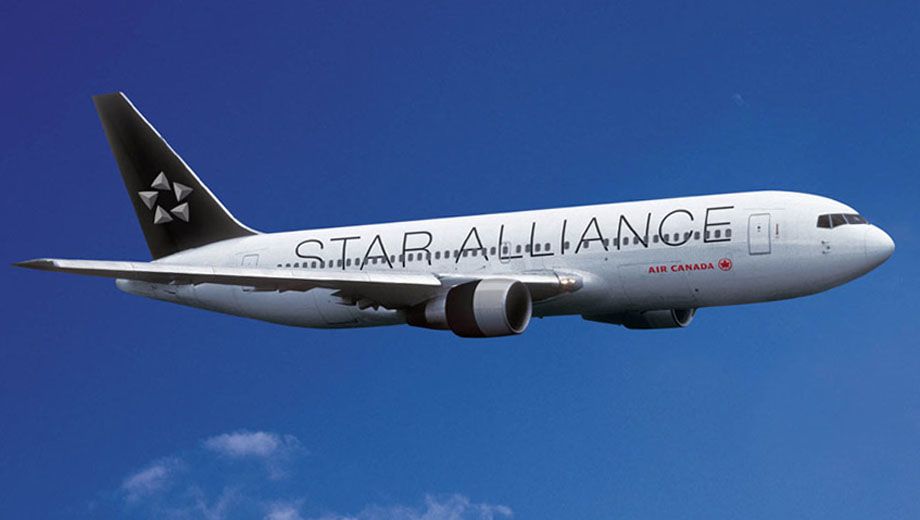
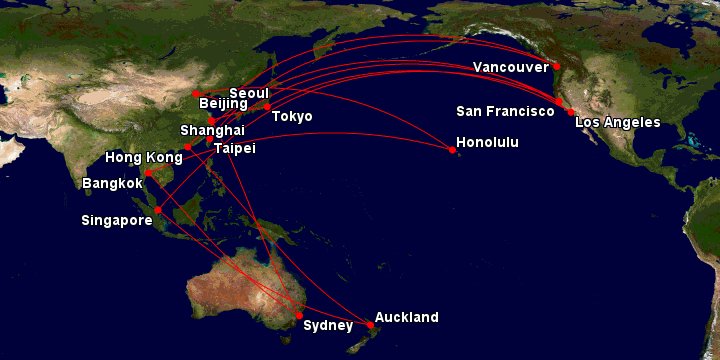
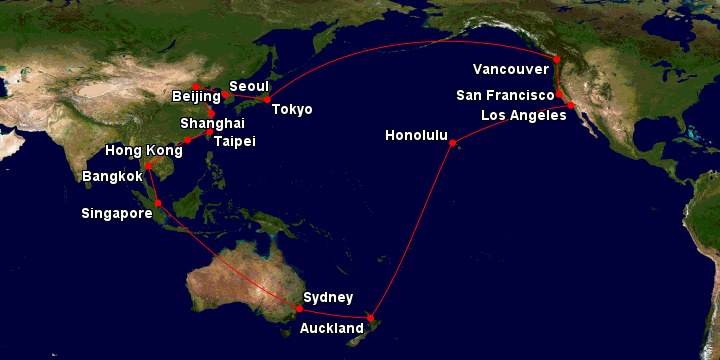
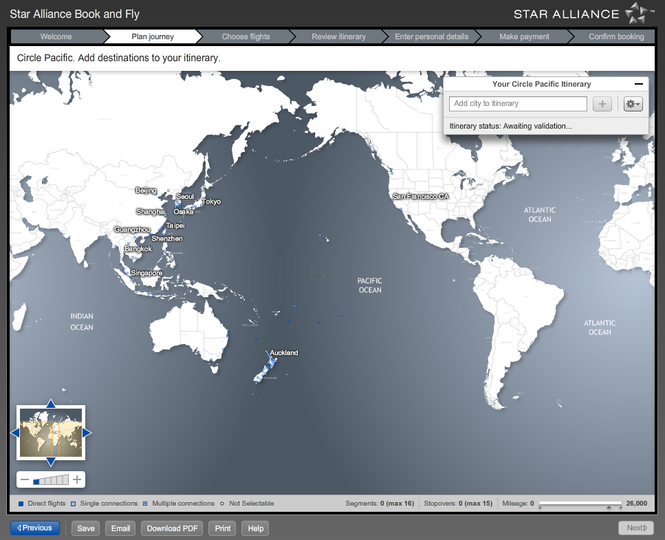
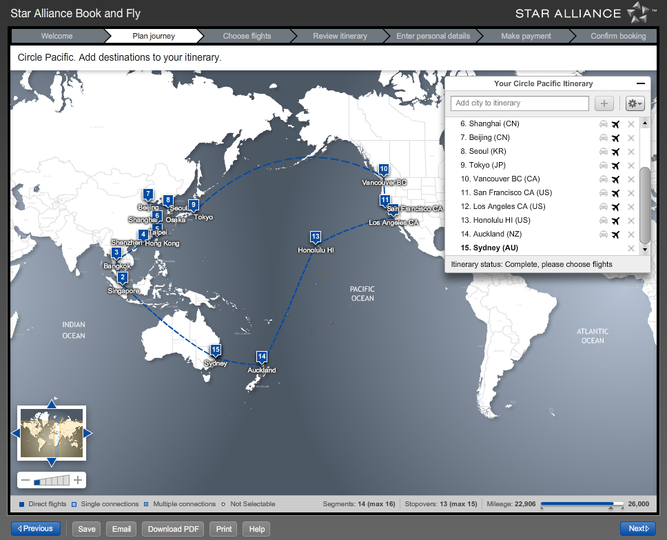
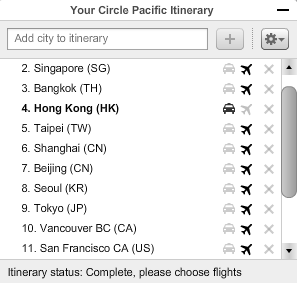
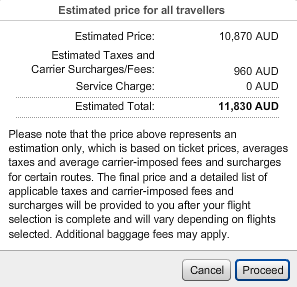
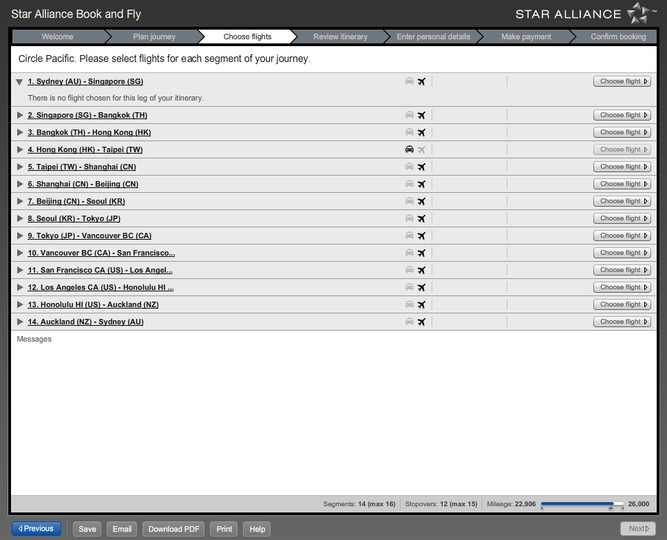
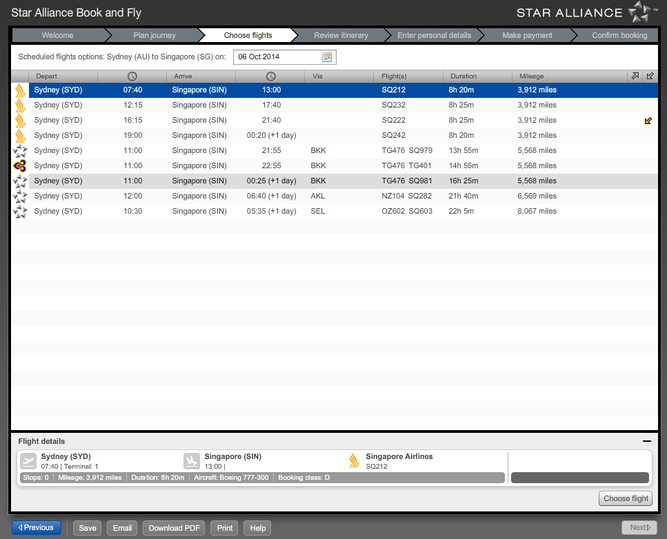
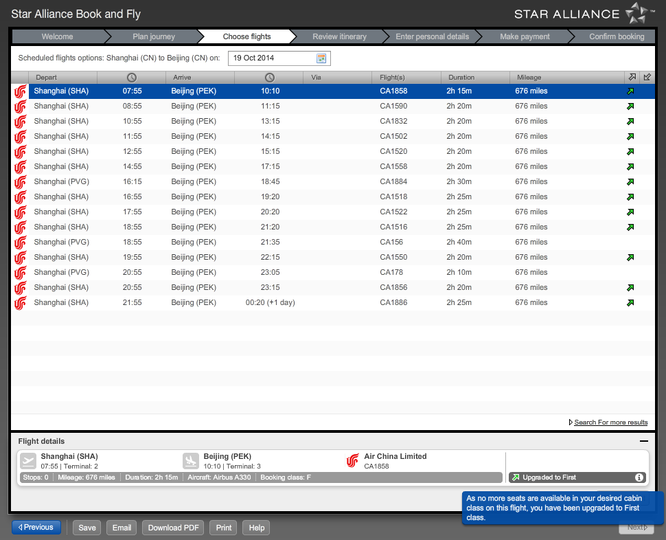

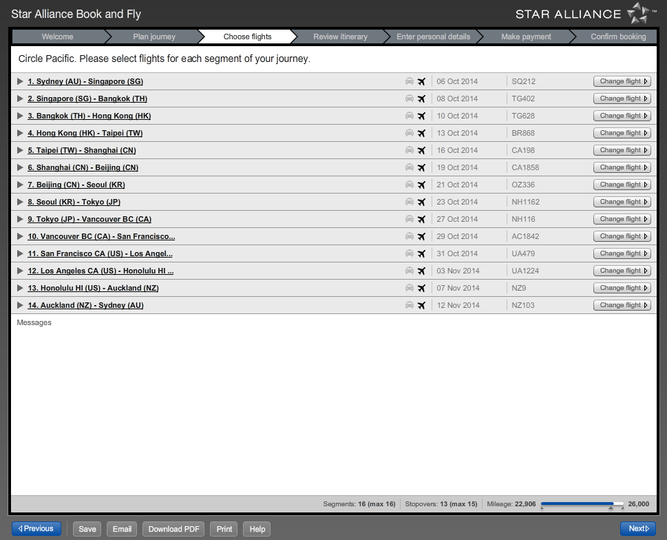
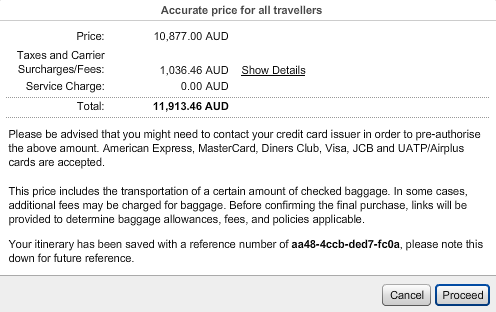
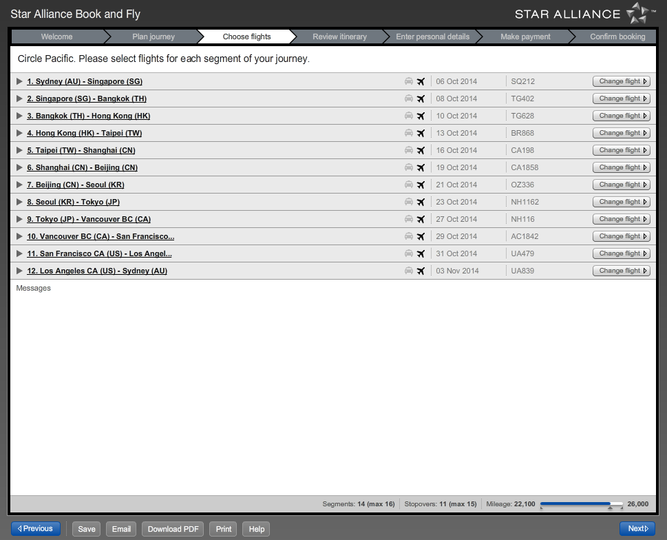
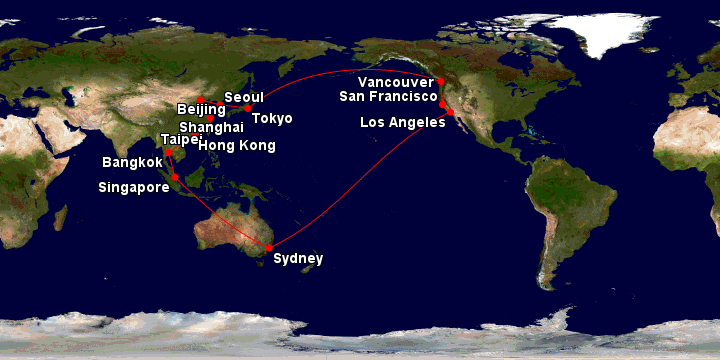
Qantas - Qantas Frequent Flyer
20 Sep 2013
Total posts 462
Chris,
Am i missing something but have we been bombarded with more articles in recent days than at anytime in ABT history.I like it you and all the team keep up the great work.Will the staff writers attached to a recent article be named.
Qantas
19 Apr 2012
Total posts 1429
I can't quite see how Latin America fails the Pacific Ocean test, can someone clarify. The west coast is on the Pacific Ocean last time I looked
Hi Guest, join in the discussion on How to plan and book a Star Alliance Circle Pacific journey